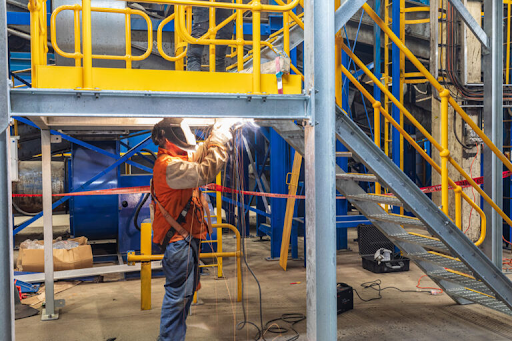In the world of industrial piping systems, efficiency and cost-effectiveness are paramount considerations. One key component that plays a crucial role in these aspects is the slip-on flange. This article delves into the advantages and potential drawbacks of utilizing slip-on flanges in various industrial applications, providing a comprehensive cost-benefit analysis to guide decision-making processes.
Understanding Slip-On Flanges
Slip-on flanges are a type of flange that slides over the end of piping and is then welded in place. They are known for their simplicity and ease of installation, making them a popular choice in various industries. These flanges are designed to fit over the Slip-On Flanges, with the flange face extending from the end of the pipe by a certain distance. The smooth transition from pipe to flange allows for straightforward alignment and welding.
Advantages of Slip-On Flanges
1. Easy Installation and Alignment:
One of the primary advantages of slip-on flanges is their simplicity of installation. With no special skills required, these flanges can be easily aligned and welded into place, reducing labor costs and time spent on the installation process. This is especially advantageous for projects with tight deadlines.
2. Cost-Effective Material Usage:
Slip-on flanges typically have a lower material cost compared to other flange types. The minimalistic design and reduced material requirements contribute to overall cost savings. For projects where budget constraints are a significant concern, slip-on flanges present a viable solution without compromising on functionality.
3. Versatility in Applications:
Slip-on flanges are versatile and find application in various industries, including oil and gas, chemical, and water treatment plants. Their adaptability to different pipe materials and sizes makes them a versatile choice for a wide range of projects.
Considerations and Potential Drawbacks
While slip-on flanges offer several advantages, it is essential to consider potential drawbacks that may affect their suitability for certain applications.
1. Limited Pressure and Temperature Ratings:
Slip-on flanges may have limitations in terms of pressure and temperature ratings compared to other flange types. In high-pressure or high-temperature environments, it is crucial to assess whether slip-on flanges meet the required specifications to ensure the safety and integrity of the piping system.
2. Reduced Rigidity:
The welding connection of slip-on flanges can result in reduced rigidity compared to fully-welded flange options. In applications where structural integrity is a critical factor, it is essential to evaluate whether the flexibility of slip-on flanges aligns with the project requirements.
Cost-Benefit Analysis
1. Initial Cost Savings:
The upfront cost savings associated with slip-on flanges are evident, considering their lower material costs and simplified installation process. For projects with tight budgets and timelines, these factors can be significant advantages.
2. Labor Efficiency:
The ease of installation and alignment of slip-on flanges contributes to labor efficiency. Projects can be completed faster, reducing labor costs and allowing resources to be allocated to other aspects of the project.
3. Material Costs vs. Performance:
While slip-on flanges offer material cost savings, it is essential to balance this against the specific requirements of the project. Assessing pressure and temperature ratings, as well as the structural integrity needed, ensures that cost savings do not compromise the overall performance and safety of the piping system.
Conclusion
In conclusion, slip-on flanges present a compelling option for maximizing cost-efficiency in industrial piping projects. Their ease of installation, cost-effective material usage, and versatility make them a preferred choice in various applications. However, it is crucial to carefully assess specific project requirements, considering factors such as pressure and temperature ratings, to determine whether slip-on flanges align with the performance and safety standards needed. By conducting a comprehensive cost-benefit analysis, decision-makers can confidently choose slip-on flanges as part of an efficient and economical piping solution.
Top of Form








